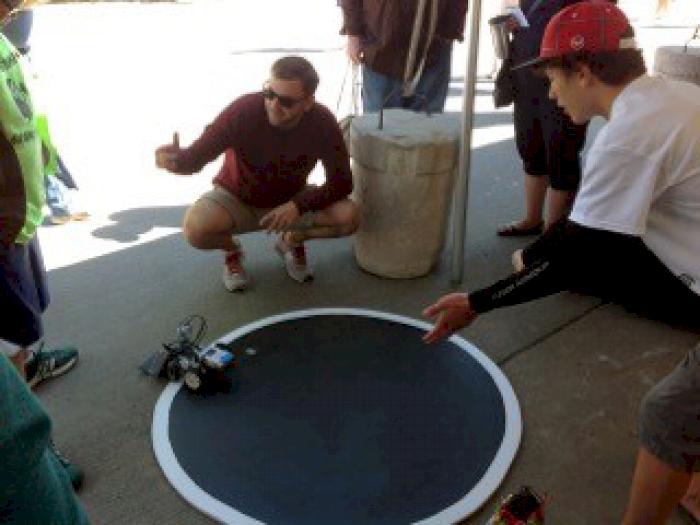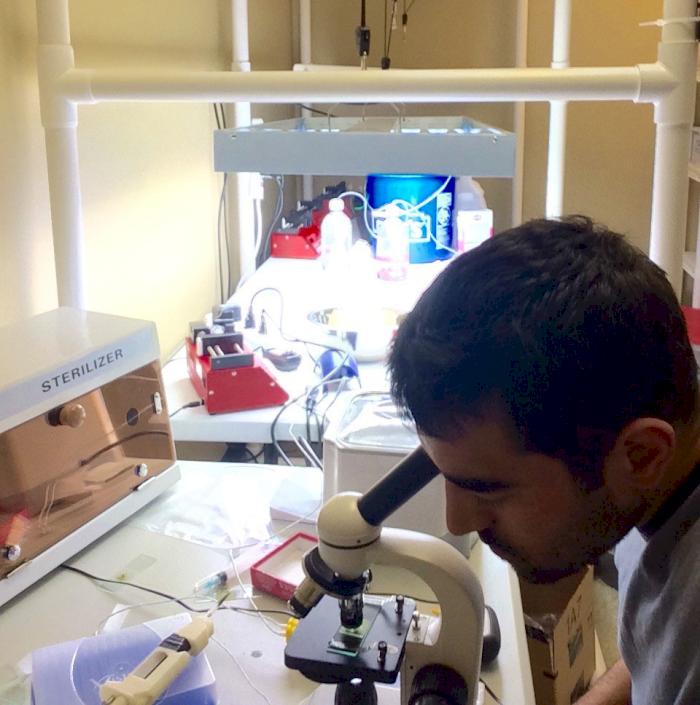STEM in DSM: Iowa students develop custom apps for SCI
- Monday November 2 2015
- STEM in DSM
SCI is moving into the 21st Century with the help of Iowa students who, this semester, will develop a “Design Your Visit to SCI” app for Android devices.
In a world constantly buzzing with text messages, gadgetry, virtual reality and beyond, middle and high school students are already up-and-coming tech experts. HyperStream Clubs take that know-how to a new level by inviting students from across Iowa to build tech projects in an after-school setting. Each semester features a new proposal.
This semester, students will use Appinventor software to design, build and prototype an app that guides participants to the SCI attractions and features that best fit the ages and interests of their group. The project will provide an opportunity for students to work directly with a client. Then, in December, each club will present its product, and SCI staff will provide feedback before selecting a winner.
For Callanan Middle School club mentor Keith Huls, each semester-long contest is about more than crowning a winner and unveiling a new product: It’s about developing Iowa’s innovation ecosystem.
“We hope to build a strong technical foundation that keeps people in the state,” said Huls, an IT application analyst lead at Principal Financial Group. “At Principal, we want to have a deeper technical pool, and it starts with a strong technical foundation here. We are investing in the future for the state.”
That future starts with a simple model: feedback. While students may complete a classroom assignment, receive a grade and toss the finished product, HyperStream Clubs create dialogue as students collaborate with peers and clients to revise and improve projects.
Stacy Monroe, an IT application analyst senior at Principal and Huls’ co-mentor, said the SCI app will provide an opportunity for students to become user experience designers.
“This is a good opportunity for students to develop a product, get it in front of a client and say, ‘Does this make sense? Does it work like you expect it to?’ and then take it back and make changes,” Monroe said. “That’s real-world experience of what IT is.”
As co-mentors, Monroe and Huls strive to instill confidence through a guiding idea:You’realreadya tech producer.
“Students are already developing multimedia every time they use Snapchat and Instagram,” Huls said. “Technology sparks creativity. With technology, the tools are there, and the cost to get involved is typically pretty low. It gives students the confidence that they can do things, they can build apps, they can develop multimedia.”
This is the first year the Technology Association of Iowa, HyperStream’s parent organization, has partnered with a nonprofit in the community on a project inspired by all three organizations’ missions: inspiring the next generation of Iowa tech professionals.
“When the opportunity came up for us to partner with the Science Center of Iowa, it was really a perfect marriage because it fulfills our mission of doing partnerships, having real-life, project-based educational opportunities for students, and it’s a perfect way to expose students to the larger role of STEM education,” said Tyler Wyngarden, TAI director of talent development.


